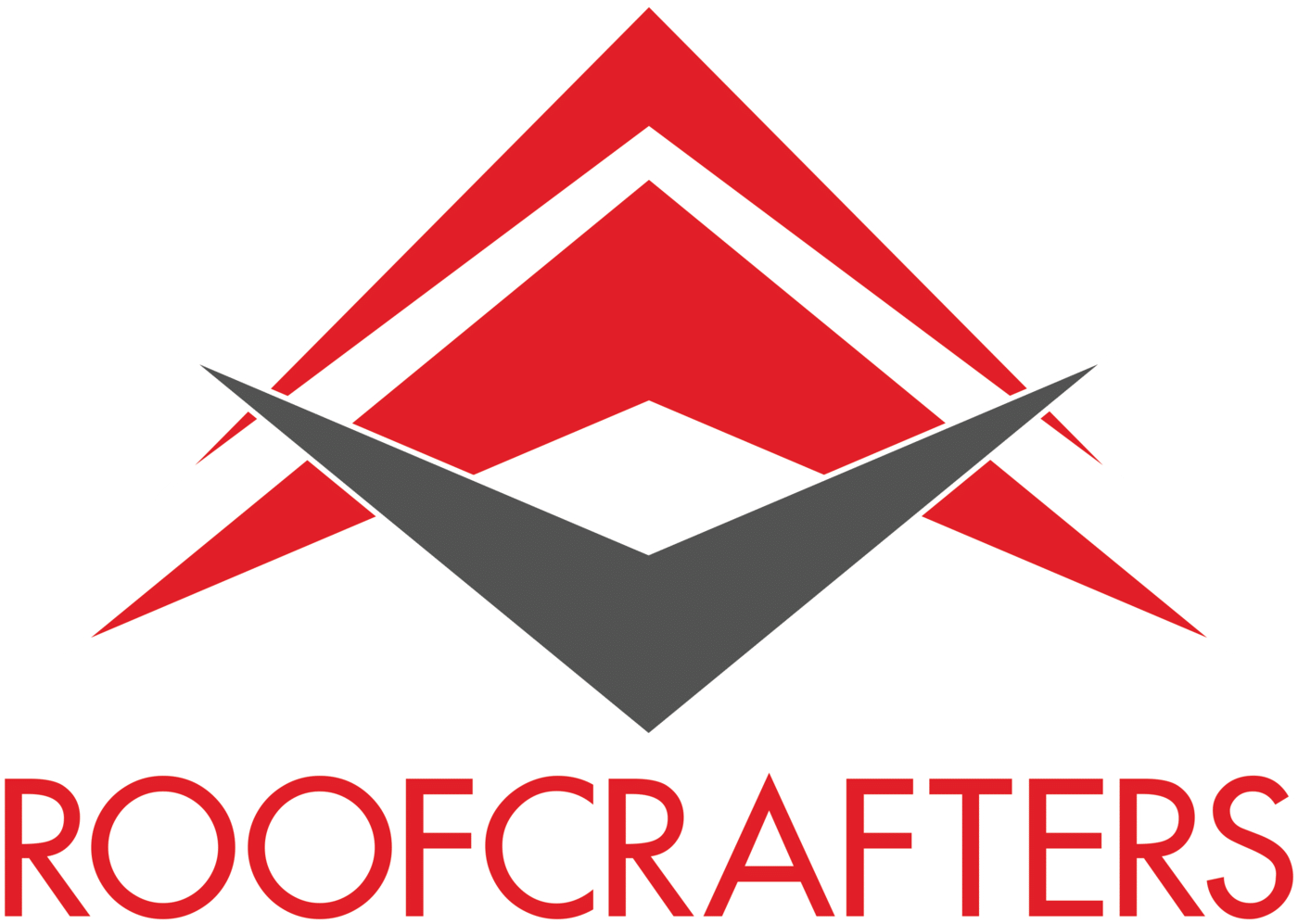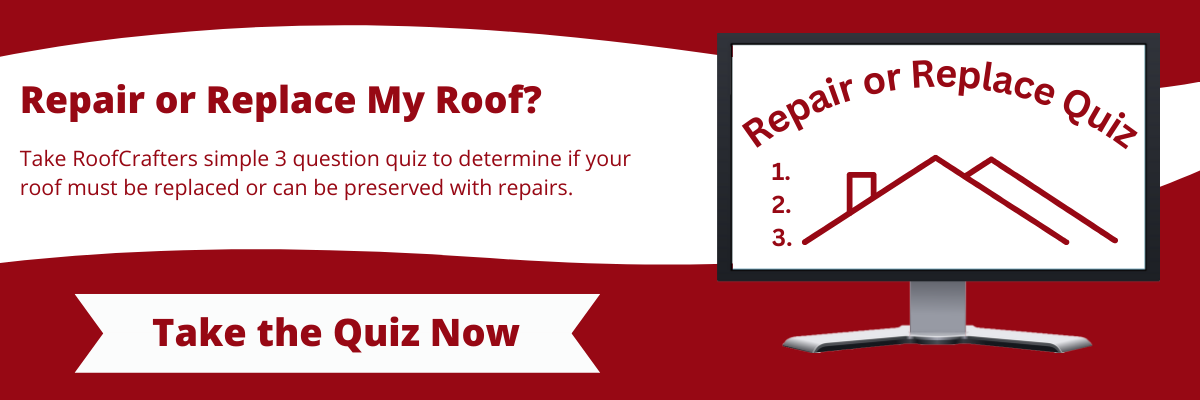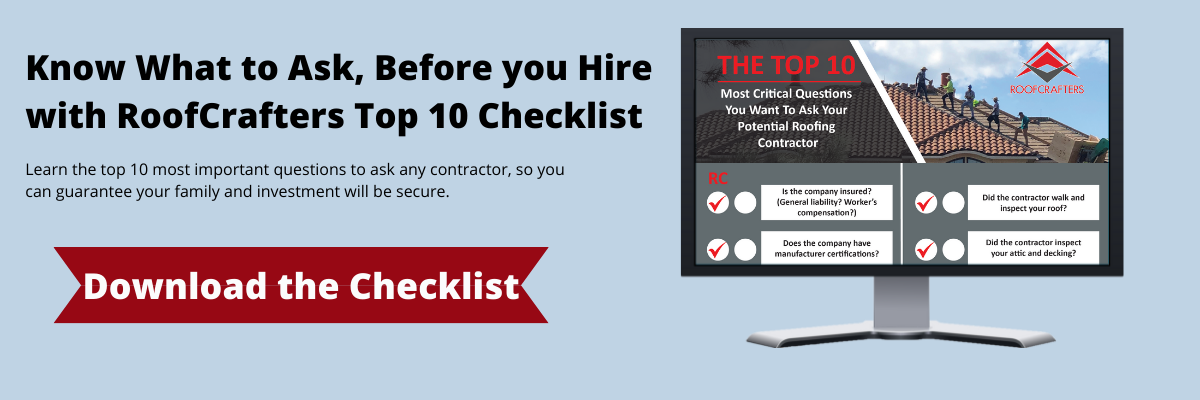Unveiling the Real Cost of a New Roof in 2025
August , 2025 | 20 min. read
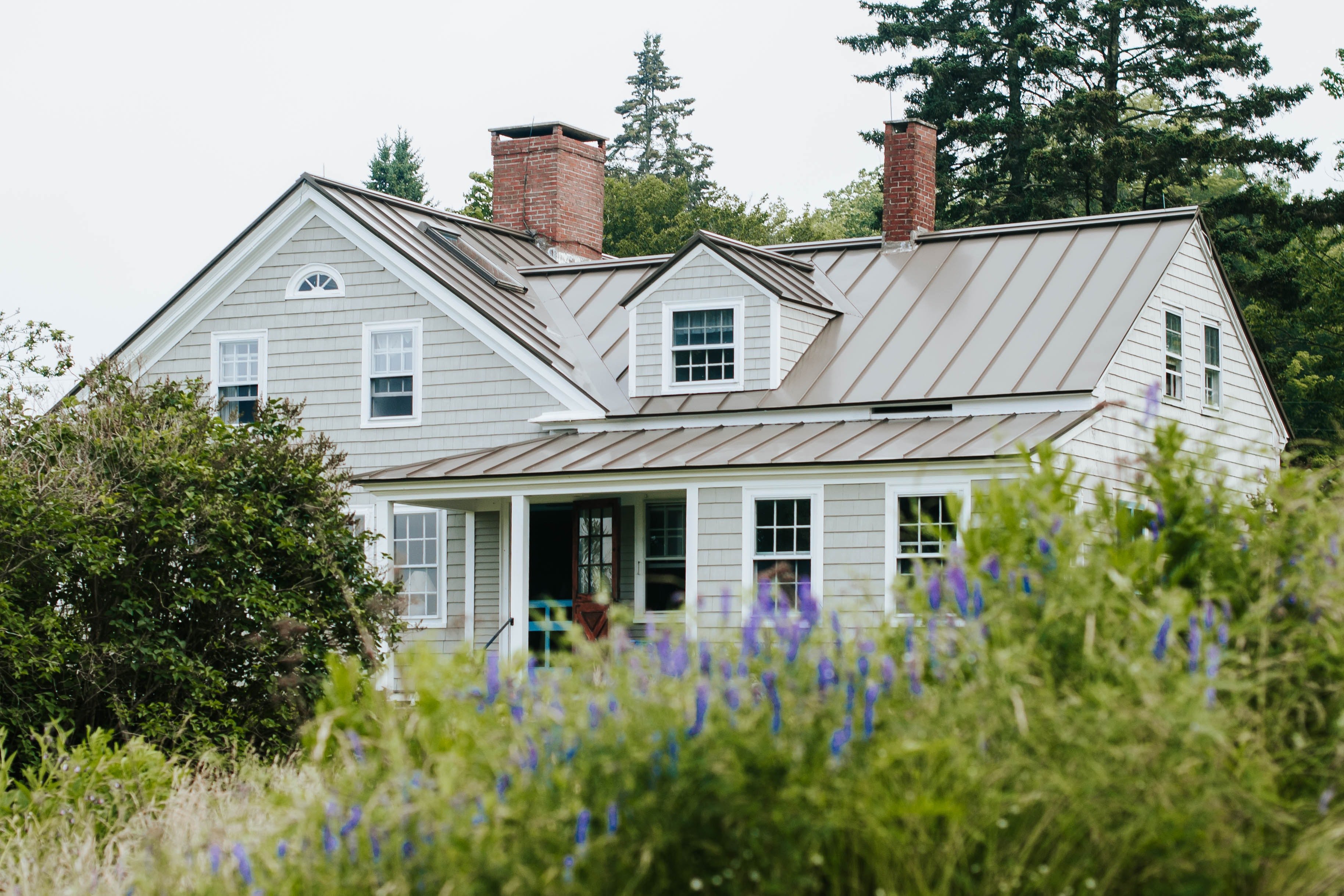
Are you grappling with the realization that your home needs a new roof? Wondering how deep into your pockets you'll need to dig for this important update? You're not alone in this pivotal moment of homeownership.
Roof replacements often come knocking due to various reasons. Relentless storm damage and the natural wear and tear of time. The cost of a new roof is influenced by more than the square footage and choice of materials. It involves various elements and other components that go beyond the obvious.
With three decades of experience, RoofCrafters understands the gravity of this decision. We want to share our experience with you. We're here to guide you through the financial landscape of installing a new roof. Our aim? To empower you with the knowledge, so you're equipped to make a well-informed decision.
In this article, we'll shed light on all the factors that contribute to the cost of a new roof. From material choices to unexpected elements that often slip under the radar. By the end of this guide, hopefully, you'll have a clearer picture of the financial journey ahead in securing a roof for your home. We've also put together a short video.
Let’s dive into the details and demystify the cost of a new roof in 2025.
Decoding the Average Price Tag of a New Roof in 2025
The cost of replacing a roof in 2024 varies depending on many factors that determine the actual cost, such as the square footage of your roof, the materials you select, and the extent of damage to your roof's framing structure. However, for the most part, you can expect the prices for the most popular roof materials (which are asphalt shingles) to average between $8,300 and $21,000, and as high as up to $30,000 for larger, more complex roofs with better-grade materials.
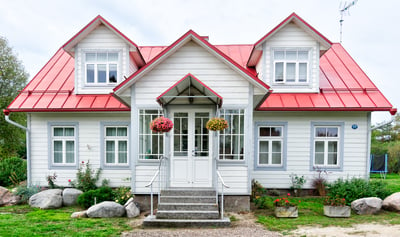
It starts with the type of roofing materials you select for your home. Doesn't everyone love a cute white home with a bright red metal roof?
Here are 7 of the most popular roofing materials with their average costs installed on a single-family home: (Yes, including the cute white home with the red standing seam metal roof!)
- 3-tab shingle roof, average cost $8,300 – $11,600
- Architectural shingles, average roof cost $13,200 – $19,100
- Upgraded architectural shingles, average roof cost $15,100 – $21,000
- Designer asphalt shingles, average cost $22,300 - $33,200
- Exposed fastener metal roof, average cost $19,500 - $33,500
- Standing seam metal roof, average roof cost $29,500 – $44,300
- Spanish tile roof, average roof cost $35,700 – $71,800
These are the most popular materials, with an average roof size on houses that we typically tear off and replace with new materials. However, before you try to answer the question, “How much does a new roof cost?” you need to be sure that replacing your roof is your only option.
Exploring Alternatives Before Committing to a New Roof
Before taking the plunge into a full roof replacement, it's wise to consider all your options. Can your existing roof be repaired? Ensuring that a new roof is truly necessary can save you significant time and money.
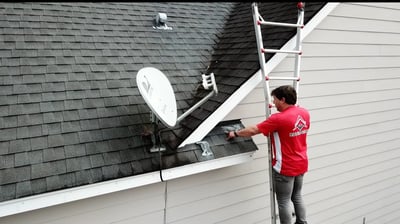
Here's a list to help you check your current roof's condition and explore possible alternatives:
- Assess the roof's age against its expected lifespan.
- Consult with a roofing expert to determine if repairs could buy you more time.
- Consider your long-term plans for the property. A replacement may not be cost-effective if you plan to relocate soon.
- Evaluate the frequency and extent of past repairs. Frequent issues might indicate the need for a complete replacement.
- Investigate if your roof sustained storm damage. You might be eligible for insurance coverage for a replacement.
After you’ve made sure that replacing a roof is the best option for your home, it’s time to estimate the total costs. So, let’s take a look at some of the common costs that will impact the price of a replacement. Still not sure, take the quiz below.
Navigating Roofing Permits and Inspection Costs
Where your home is located affects how much your new roof will cost. This is especially true for permits and inspections. Local rules might require many inspections during the roofing process, increasing the total cost.
- Understand local regulations: Different cities have varying requirements for roofing permits and inspections. Which can impact your budget.
- Prepare for added expenses: Local regulations ensure safety and compliance. But they can also add unexpected costs to your roofing project.
Understanding and budgeting for these potential extra costs upfront can help avoid surprises down the line. Now, let's discuss setup and safety expenses.
The Impact of Equipment, Setup, and Safety on Roofing Costs
When planning for a new roof, let's not forget the extra expenses associated with equipment, setup, and safety measures. These aspects can affect the cost, especially in more challenging roofing projects. On average, hoist equipment, scaffolding, or man-lifts can add $5,000 to $15,000 to a project.
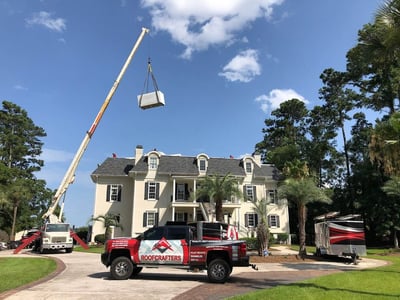
- Height and Steepness Challenges: Special safety equipment is essential to follow OSHA regulations. This might include harnesses, scaffolding, or other fall protection systems.
- Equipment for Material Handling: Depending on the height and accessibility of your roof. To safely get the materials to the roof, special lifts or hoists may be required.
- Setup and Compliance Costs: The need for extra safety can lead to higher setup costs. Ensuring worker safety and regulatory compliance is a priority. It will also impact your budget.
When getting an estimate for your roof, make sure to discuss this with your contractor. This foresight ensures that your roofing project is safe and compliant. But also financially transparent from the beginning. Let's discuss the money in waste.
Tear-off and Waste Disposal: Key Factors Influencing Roof Replacement Costs
The cost of removing and disposing of your old roof is important and can vary based on the material. Removing the roof is not simple. It requires careful handling, especially for specific materials.
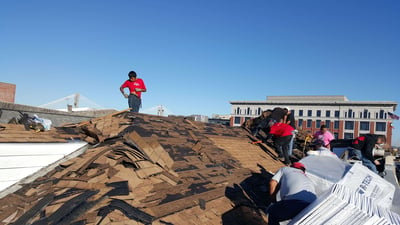
Factors that affect the budget:
- Special Handling for Hazardous Materials: If your current roof is asbestos, the cost for removal will be higher due to the specialized handling procedures. This is mandated by the EPA. Asbestos requires careful containment and disposal methods. This is to ensure safety and compliance with environmental regulations.
- Weight and Type of Materials: The type of material being removed also plays a role in disposal costs. Heavier materials like concrete tiles incur higher disposal fees. Lighter options like cedar shakes are cheaper. This is because the cost of waste disposal often depends on the weight of the material.
- Recycling Opportunities: On a brighter note, some materials offer recycling possibilities. For instance, metal roofing can be recycled. This can help offset the disposal costs. This benefits your budget and is a more environmentally friendly option.
When planning, discuss these factors with your roofing contractor. They'll provide a true estimate by considering the costs associated with the removal and disposal of your current roofing.
Accounting for Wood Replacement and Hidden Costs in Roofing
When budgeting for a new roof, it's important to expect unexpected costs, like replacing wood and fixing hidden damage. These unexpected costs can impact the budget for your roof replacement. We've found it's better to discuss these "unforeseen" costs upfront.
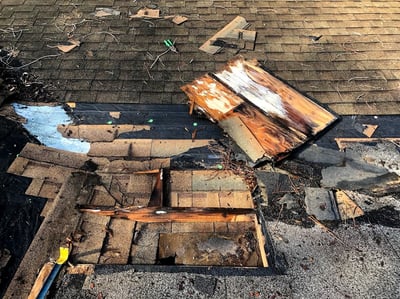
Experienced roofing estimators will do their best job to determine the amount of wood you need. But some areas are impossible to get to in your attic. This leaves room for unforeseen wood replacement.
- Wood Replacement: When replacing a roof, we may find problems with the structure like rotten wood or weak rafters. These issues have to be fixed to ensure the stability and longevity of your new roof. The cost of replacing wood and repairing any damage can add a large amount to your total expenses.
- Planning for Contingencies: To avoid financial surprises, it's wise to include a contingency fund in your roofing budget. This reserve can help cover unexpected expenses, ensuring that your project doesn’t stall due to a lack of funds.
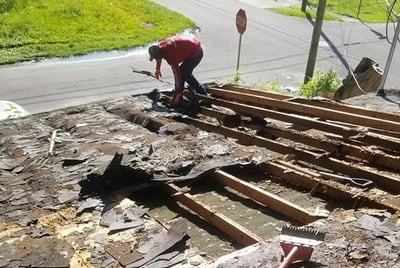
These repairs will be an added cost on top of the roof replacement. However, these repairs will ensure that your new materials function well throughout their lifespan. So, before signing your new roof agreement, talk with your contractor to discuss the potential for extra costs. This conversation will help you get a realistic budget.
Understanding the Labor Costs in Roof Replacement
Believe it or not, labor accounts for 60% of the total roof replacement cost. If you’ve hired a roofing company that’s charging minimal prices, perhaps it’ll be better to check out their customer reviews. Most leaks are caused by improper installation, so you'll want to make sure you have a roofing contractor that provides quality work and has a great workmanship warranty.
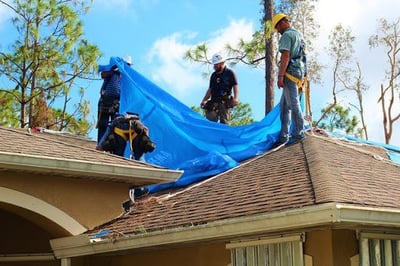
Average Labor Rates for Different Roofing Materials
Below are 7 of the most popular roofing materials installed on homes in 2024. The labor rates we've provided are average for simple to complex rooflines. A shortage of labor in your area could impact the prices. and make them higher.
1. Three Tab Shingles:
- Average Labor Rate: $1.00 - $1.25 per square foot
2. Architectural Shingles:
- Average Labor Rate: $1.35 - $1.55 per square foot
3. Upgraded Architectural Shingles:
- Average Labor Rate: $1.35 - $1.55 per square foot
4. Designer Shingles:
- Average Labor Rate: $1.60 - $1.95 per square foot
5. Screw-Down Metal Roofing:
- Average Labor Rate: $1.85 - $2.25 per square foot
6. Standing Seam Metal Roofing:
- Average Labor Rate: $2.95 - $3.55 per square foot
7. Tile Roofing:
- Average Labor Rate: $3.50 - $4.45 per square foot
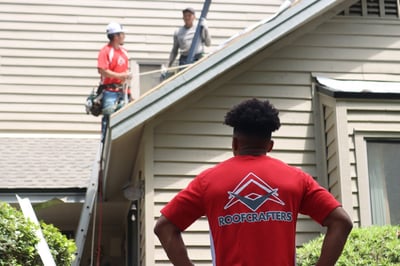
It's also important to note that 85% of roofing companies go out of business before their third year. While 90% are gone before their faith year in business. This transparency allows you to understand what you're paying for. Premium services vs cheap labor. Which can help you make an informed decision about your roofing project.
Navigating Roofing Material Costs for 2025
Selecting the best roofing material is a pivotal decision. One that will impact your roof replacement budget. The type of material you choose can lead to a wide range of costs. For instance, opting for premium options like slate or clay tiles comes with a higher price tag. Yet, there are affordable options, such as shingles, that offer peace of mind at a lower cost.
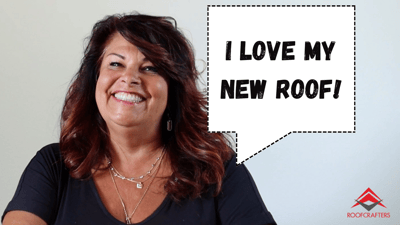
It's helpful to establish a clear budget for your roofing project. This enables your roofer to provide solutions that align with your requirements. To make an informed decision, consider reviewing the latest prices for the top 16 materials of 2024. This guide offers a comprehensive overview of costs. We weigh the pros and cons of each material to help you better decide what's best for you.
The Hidden Extras: Understanding the Costs of Roofing Components
A roof replacement is more than slapping on new shingles or tiles. It's a process involving installing several components. Each component plays a critical role in the roof's performance and longevity. To find out the cost of replacing your roof in 2024, you need to know the accessories.
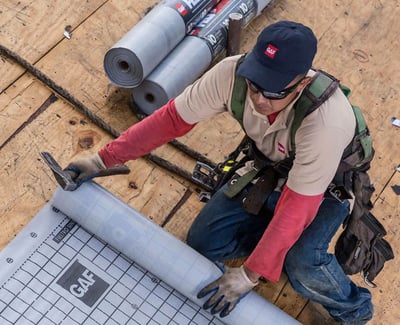
Here are the vital material accessories that a professional roofer will consider:
- Water Shield: A waterproof barrier that protects the most vulnerable areas of your roof from water infiltration.
- Underlayment: This is the protective layer placed over your plywood. It's crucial for waterproofing and protecting against the severe elements.
- Flashing: These metal pieces are installed in leak-prone areas to direct water away from high-risk spots.
- Drip Edge: This metal flashing is installed at the edges of your roof. This will help control the flow of water away from the fascia and protect underlying roofing components.
- Starters: Used along the edges of your roof. These are installed to provide extra leak and wind protection.
- Ventilation: Installing roof ventilation is vital. It helps to regulate temperature and moisture levels in the attic.
- Skylights: Adding or replacing skylights during your roof replacement will impact the cost.
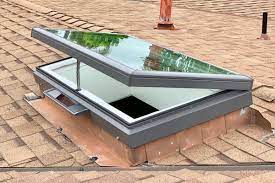
Don't overlook the small but significant details like the cost of nails. Small components will add to the final cost of a roofing project. Several boxes may be required, and while minor, their cost contributes to your final bill. By considering all the components, you can ensure a more accurate budget and avoid unexpected expenses. Now, let's discuss warranties.
Deciphering Roof Warranty Costs: A Critical Investment Consideration
When it comes to roofing warranties, understanding the financial implications is critical. At first glance, a pro-rated warranty may seem cheaper because of its lower upfront cost. But it's important to remember that as your roof gets older, you may have to pay more as the coverage decreases.
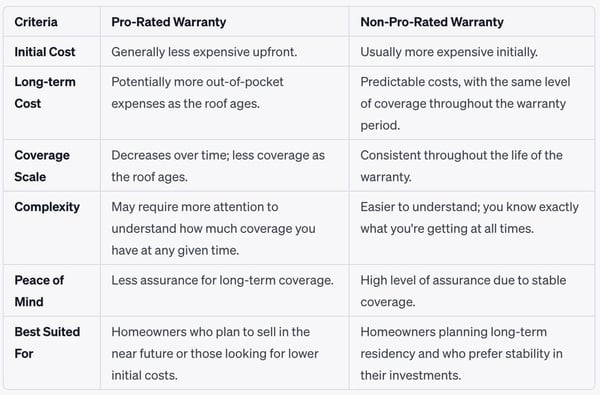
But a non-pro-rated warranty has the same coverage throughout its lifespan. This means no surprises down the line. This can provide you with a predictable safeguard for your investment. Keep in mind, your contractor's warranty does not cover material defects.
Choosing the right warranty for your home can affect your peace of mind and finances. Whether you plan to sell soon or stay for a long time. Consider your choices to make sure the warranty on your roof matches your financial plan and goals for owning a home.
Related Article: Exposed: The Truth Behind Lifetime Shingle Warranties
Strategizing Your Roof Replacement Investment
Starting the process of getting a new roof can be both exciting and worrisome, especially when it comes to money. The question isn't "Can I afford a new roof?" but rather "How can I smartly invest in a new roof?"
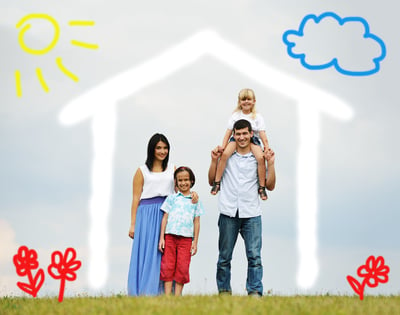
The truth is that the cost of a new roof encompasses more than the sum of its parts. It's an investment in your home's future and your peace of mind. That's why it's important to contact an experienced roofing company. They can give a thorough assessment to make sure nothing is missed.
For 30 years, RoofCrafters hasn't just provided estimates. We've done our best to help educate our clients on all their options. We also provide a roadmap to financial flexibility. With various financing options, we'll work with you to make sure your roofing project aligns with your financial comfort zone.
A reliable roof is not a mere upgrade—it's an essential shield for your sanctuary. Don't let budget concerns deter you from securing what's rightfully yours. A safe, quality roof overhead. If you're ready to take the next step or want to expand your roofing knowledge, we're here to assist.
We recommend reading "Is Your Roof Covered by Homeowner’s Insurance?" if you think you have storm damage. So you can be better prepared for the out-of-pocket expenses of your upcoming roofing project.
My name is Cassie, and I’m the Content Manager here at RoofCrafters. I was born and raised in Chicago, Illinois, and made my way out to Florida post-college graduation. I’m incredibly passionate about writing and creating valuable content that helps others with the collaboration of my marketing team. When I’m not working, I enjoy shopping (a little too much), spending time at the beach, and reading!
